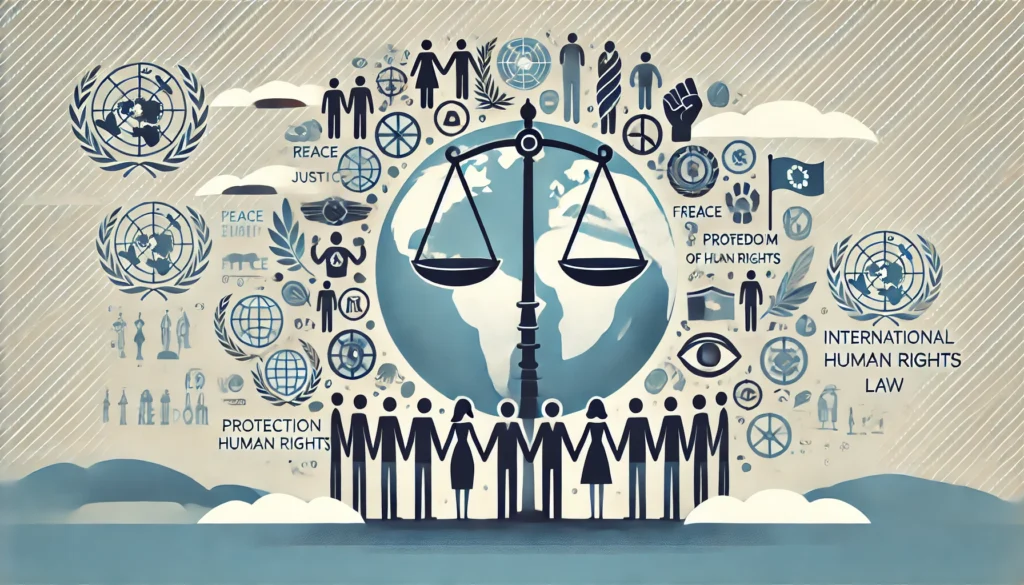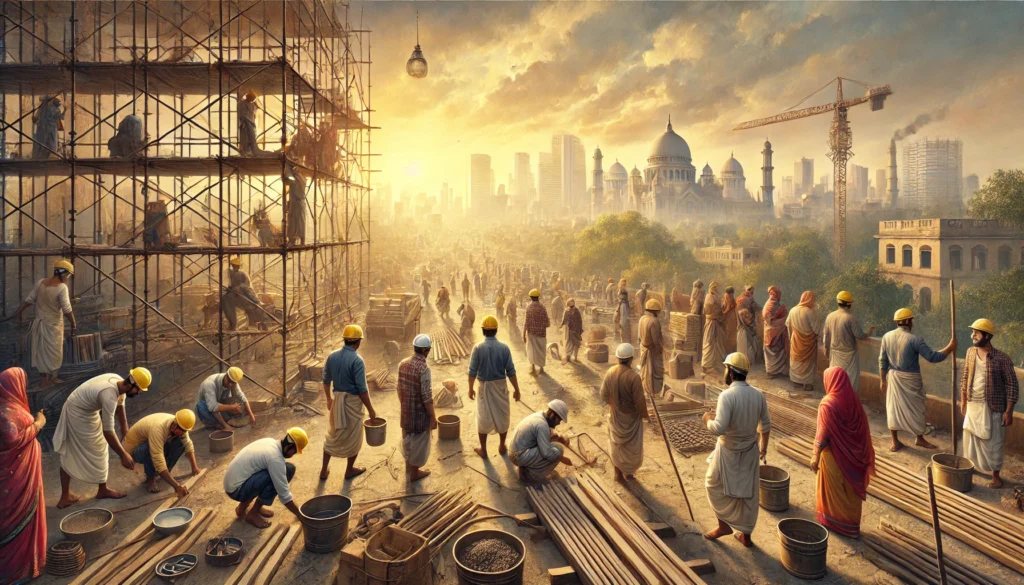Published On: 5th September, 2024
Authored By: Gauri Gupta
University Institute of Legal Studies, Panjab University
Abstract:
The right to equality, established in articles 14 to 18 of the Indian constitution, safeguards for every individual equal treatment before the law and prevents any discrimination based on race, caste, gender, etc. This article navigates through the historical evolution of the said right, leading its way from international human rights instruments to its understanding in Indian jurisprudence. It further delves into the expanded scope of Article 14 as recognized by the Indian courts to include private actions affecting equality, emphasizing the state’s duty to assure equity and impartiality. Despite having legal safeguards, contemporary challenges still exist, including discrimination based on various forms such as gender, race, LGBTQ+ rights, and economic inequality. These adversities emphasize the ongoing struggle to reduce societal divides and achieve effective and real equality.
The article further provides a path forward to tackle these contemporary challenges. It asserts to adopt a multifaceted approach including legal reforms, education, and societal changes to address the issues efficaciously. It requires coordinated efforts from governments, civil society, and individuals to support and promote equality, ensuring that everyone, irrespective of their background, has equal rights and opportunities in a fair society.
Introduction:
The right to equality acts as a basis of democratic ideals globally, markedly mentioned in the Indian Constitution under Articles 14 to 18. The fundamental right states that every individual is considered equal before the eyes of the law, far from any discrimination based on race, caste, gender, religion, etc. It symbolizes a commitment by the State to ensure equal protection and opportunity for all, aiming to eliminate historical inequalities and cultivate a society where justice prevails efficiently. Article 14 forms the cornerstone of this right, ensuring equality before law and preventing whimsical state actions. Articles 15 and 16 further extend these protections, prohibiting discrimination in public places and ensuring equality in public employment, respectively. Furthermore, Article 17 abolishes untouchability and Article 18 abolishes awarding any kind of titles except for military and academic titles. These articles emphasize India’s dedication to eradicating social preconceived notions and upholding equalitarian values.
Historically, the twentieth century experienced an International agreement on the right to equality through Universal Declaration of Human Rights (UDHR) and successive international treaties. In India, the judiciary’s interpretation of Article 14 has been very crucial, expanding its scope to include private actions that affect equality and uphold the principle of non-discrimination across various aspects of society.
Despite significant legal advancements, contemporary India faces strong challenges in realizing true equality. Continuing racial discrimination, gender inequality, challenges to LGBTQ+ rights, and widening economic disparities highlight the ongoing struggle. These issues underscore the need for resilient legal frameworks, societal transformation through education and awareness campaigns, and affirmative action policies to bridge gaps and ensure equitable opportunities for marginalized and disadvantaged communities.
Moving forward, achieving noticeable and effective equality calls for collaborative efforts from governments, civil society, and individuals alike. Grassroots movements and a commitment to an inclusive society are essential in tackling systematic obstacles and progressing the vision of a society where every individual enjoys equal rights and lives with dignity. This article focus on these issues extensively, aiming to incite thought and inspire action towards a more just and equitable future for all in India and beyond.
Explanation:
Right to equality has been mentioned under Articles 14-18 of the Indian Constitution. The article asserts that all individuals are considered equal before the eyes of law and everyone is entitled to the same rights without any discrimination based on race, caste, gender, ethnicity, etc. The State grants every person equality before the law regardless of any disparities and the State does not deny anyone equal protection of laws. The right to be treated equally and without discrimination is a core element of international human rights law.
The said right is quite significant for it aims at discarding the disparities that have existed for a long time in India. Everyone is promised to be treated equally thus bridging the gap between the various communities and making the disadvantaged class recognize their value and that justice is awarded to them whenever necessary.
-
Right to equality under Article 14:
According to Article 14 of the Indian Constitution, every person in India has the right to be treated equally by the government and to receive equal protection under the law. This means that the government cannot unfairly treat someone differently based on factors like religion, race, caste, gender, place of birth, or any other such reasons. The goal is to ensure that everyone is treated fairly and justly in similar situations, without any form of discrimination.
-
Prohibition of Discrimination (Article 15):
It states that nobody should be discriminated against on the grounds of religion, race, caste, gender, place of birth, etc. and there should be no restriction on access to public places, wells, tanks, etc.
The article also indicates that special measures can be implemented for women, children, and disadvantaged classes. Thus, reservations are made for them so that they can also have equal opportunities and representation.
-
Equality of opportunities in matters of public employment (Article 16):
The article specifies that no citizen should face any discrimination in government appointments based on race, caste, religion, sex, etc. However, certain provisions can be made for the backward and disadvantaged sections to give them an equal opportunity and a platform to realize and showcase their true potential.
-
Abolition of Untouchability (Article 17):
Article 17 abolishes the practice of untouchability in all ways. Untouchability is considered a socially constructed concept that alienates certain disadvantaged classes based solely on their origin and discriminates against them accordingly.
The practice of untouchability is considered an offence and the one practicing it is punished accordingly.
-
Abolition of Titles (Article 18):
Article 18 abolishes all titles and prohibits the government from granting them to any individual, whether resident or non-citizen; yet exceptions are made for titles related to armed services and educational accomplishments.
The article also bars Indian citizens from accepting titles from foreign states. It abolished titles like Rai Bahadur and Khan Bahadur, which were conferred by the British Empire. However, awards such as Padma Shri, and Padma Bhushan, and military honors like Ashok Chakra and Param Vir Chakra are exceptions to this rule.
History:
The twentieth century saw explicit mention of the right to equality. The Universal Declaration of Human Rights (UDHR) was adopted in 1948 which had express mention of equality in articles 1 and 7. Successive international treaties, like the International Covenant on Civil and Political Rights (ICCPR) and the Convention on the Elimination of All Forms of Discrimination Against Women (CEDAW), further supported the principle.
In India, the understanding of Article 14 has experienced several changes. Indian courts have extensively developed legal principles concerning the interpretation of Article 14. They have utilized this article to nullify laws and actions that discriminate and infringe upon the right to equality. The courts have affirmed that Article 14 mandates that the State should not differentiate between individuals in similar circumstances, and laws must equally apply to everyone in same situations.
In a recognized case, the apex court of India widened the scope of Article 14 to inculcate the actions of private individuals along with the actions of the State. Even the actions of corporations are incorporated if they have a strong affiliation with the State. The Court ruled that Article 14 applies not only to actions taken by the State but also to actions by private individuals that impact the rights and freedoms of individuals.
Recently, the courts have also employed Article 14 to invalidate laws and policies that discriminate based on gender, sexual orientation, and other personal attributes. In the landmark case of National Legal Services Authority v. Union of India, the Supreme Court of India acknowledged these rights.
Legal Framework:
The right to equality is encapsulated in the constitutions and legal systems of many countries. For example, the Fourteenth Amendment of the United States Constitution assures equal protection under the law.
Similarly, the Indian Constitution upholds the right to equality in Articles 14 to 18, disallowing discrimination on various grounds and ensuring equal opportunity.
Internationally, the UDHR serves as a fundamental document, with Article 1 stating, “All human beings are born free and equal in dignity and rights.” The ICCPR and the International Covenant on Economic, Social, and Cultural Rights (ICESCR) also provide comprehensive protections against discrimination.
It also has a mention in the Human Rights Commission as it is considered to be of utmost importance for an individual.
Contemporary Challenges:
Although it has achieved significant progress in the past times, it faces various challenges in contemporary times. Discrimination, deep-rooted social norms, and economic inequality continue to hinder the required objective of equality.
-
Racial Discrimination:
Despite various legal constraints, racial discrimination exists in many societies, revealing in areas such as employment, education, and housing. Movements like Black Lives Matter have highlighted the ongoing struggle against racial injustice. People continue to believe their old beliefs and undermine black-colored people in various ways. -
LGBTQ+:
Many countries still lack comprehensive legal safeguards for the LGBTQ+ community. Discrimination, violence, and exclusion from basic rights like marriage and adoption are common challenges faced by the LGBTQ+ community. They are made fun of by people and are considered to be a weird class, people give them unsettling gazes, and the community is unwelcomed by other people who claim themselves to be normal. They struggle to form companionship and hence feel undesired and unwanted. -
Economic Disparities:
Economic inequality is a growing concern globally. The bridge between the rich and the poor has widened, with marginalized communities often bearing the pressure of economic policies and practices that favor the wealthy. Poor people are not even given respect for it is a preconceived notion that with money comes respect. Poor people are not able to benefit from the policies created for them. In some cases, they are even harassed by rich individuals for being involved in petty work. -
Gender Inequality:
Women and girls continue to encounter discrimination and violence in many parts of the world. Gender pay gaps, underrepresentation in leadership positions, and gender-based violence are significant issues that hinder gender equality. Males are given preference over girls and are still considered superior to females in many parts of the world. Despite women achieving various heights, they are often discriminated against in contemporary times.
Way Forward:
To achieve absolute equality, a diverse approach is required. Legal reforms are significant, but they must be partnered with societal change, which may be achieved through awareness campaigns. An important role can be played by education in advocating equality by challenging preconceptions and adopting inclusive behavior. Additionally, affirmative action policies may help to address historical injustices and create more equitable opportunities for marginalized groups.
Government may implement certain new schemes that aim at removing the disparities like economic disparity and thus bring them on equal footing. Backward people will thus feel more inclusive in society and a proper curriculum will come into place.
Governments, civil society, and individuals all have a role to play in advancing the right to equality. Advocacy, awareness campaigns, and grassroots movements are crucial in pushing for change and holding the required authorities accountable.
Conclusion:
Conclusively, the right to equality as enshrined in Articles 14 to 18 of the Indian Constitution represents a devotion to justice, fairness, and inclusivity. These provisions accentuate India’s path towards breaking down historical inequalities and guaranteeing equal rights and opportunities for all its citizens. While the legal framework provides a solid foundation, the reality of achieving equality remains a difficult challenge in contemporary society. The tenacious issues of racial discrimination, gender inequality, LGBTQ+ rights, and economic gaps show the struggle to fully realize the promise of equality. Solving these challenges requires not only robust legal reforms but also a transformative shift in societal attitudes and practices. Education, awareness campaigns, and affirmative action policies are some tools for lowering these divides and inculcating a more inclusive community. As we move forward towards a future where every individual, regardless of background, enjoys equal dignity and rights, collective action by government, civil society, and individuals is essential.
Ultimately, the journey toward equality is ongoing and multifaceted. By continuing to uphold the principles of non-discrimination and equal opportunity, India and the global community can move closer to realizing a society where justice is not just a promise but a lived reality for all.




